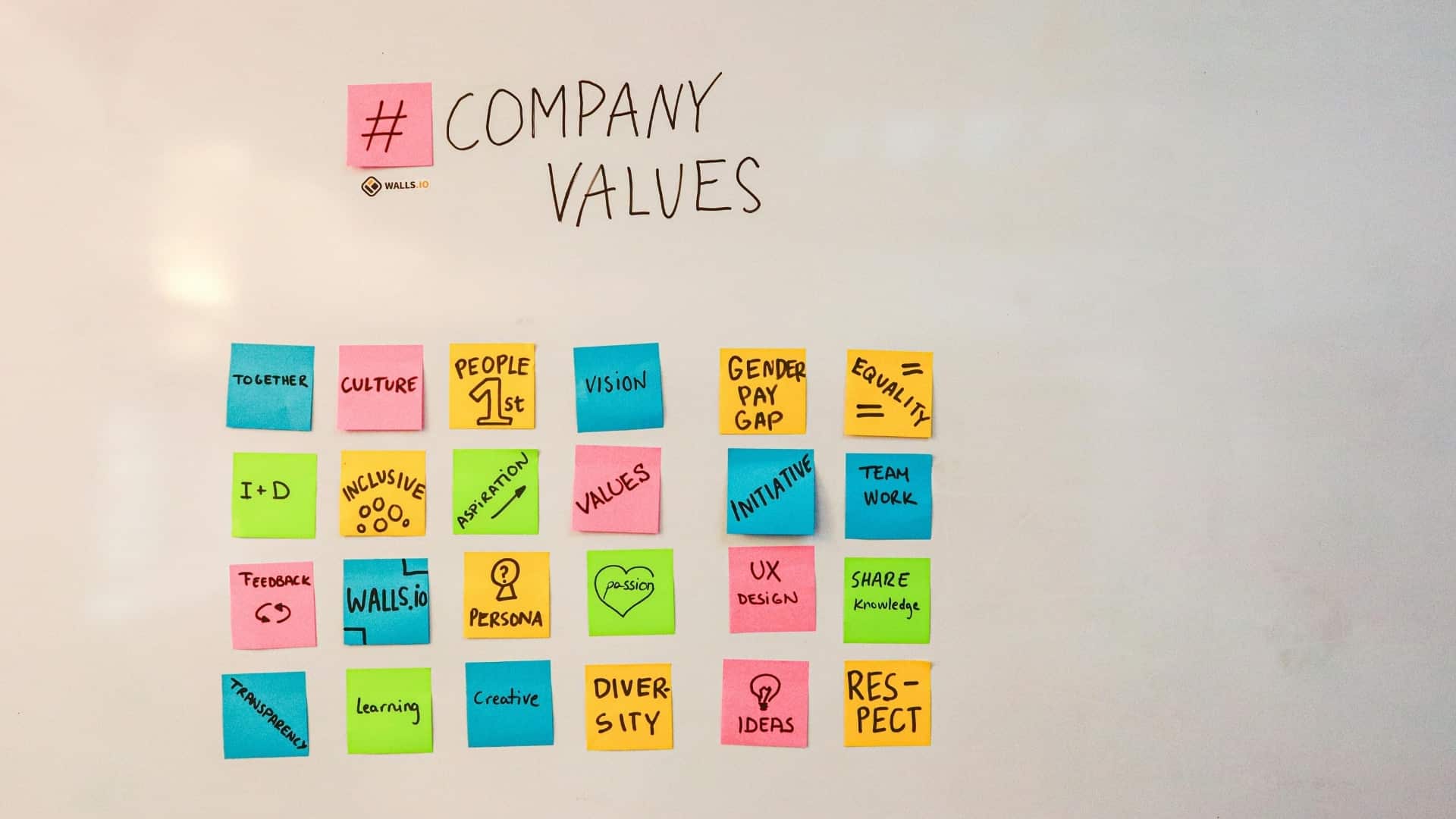Why cloud digital asset management is essential for growing businesses
Introduction
Digital asset management (DAM) is a crucial process for organizations to efficiently manage, store, and distribute their digital assets. With the increasing amount of digital content being created, it’s essential to have a centralized system to organize, access, and control digital assets. In this guide, we’ll explore the key features of DAM software, implementing a DAM solution, future trends in digital asset management, and more.

Why cloud digital asset management is essential for growing businesses
Managing digital assets—images, videos, marketing materials, and brand documents—is becoming increasingly complex for businesses of all sizes. As teams become more remote, collaborative, and content-driven, relying on traditional storage solutions like local drives, email attachments, and disconnected file-sharing tools is no longer sustainable. DAM platforms offer a comprehensive solution to this complexity by centralizing the management and organization of digital assets.
Digital files, including images, videos, and documents, are efficiently managed within DAM systems, enhancing storage, organization, and accessibility features.
Without a cloud-based digital asset management (DAM) system, businesses risk:
Disorganized content libraries – slowing down marketing, creative, and sales teams Lost or outdated brand assets – leading to inconsistent branding across channels Inefficient workflows – slowing content approvals and delaying campaign execution due to the inability to quickly locate relevant assets Security risks – with sensitive files being shared without access controls
Solution: A cloud-based DAM system like ASMBL ensures that digital assets are securely stored, easily searchable, and instantly accessible to teams—anytime, anywhere. Let’s explore how a cloud-based DAM can transform how brands manage, collaborate, and distribute digital content at scale.
What is cloud-based digital asset management (DAM)?
A cloud-based digital asset management platform (DAM) system is a centralized platform that stores, organizes, and distributes digital assets—all accessible from any location with an internet connection.
A dam platform enhances content management by providing version control, tracking asset history, and ensuring organized access to digital files, thereby improving efficiency and productivity for teams.
Unlike on-premise storage, which requires physical servers and IT maintenance, a cloud-based DAM: Eliminates storage limitations – assets are securely stored online with flexible scalability Enhances team collaboration – remote teams access and share files in real-time Improves security and access control – permissions-based access protects sensitive content Pro tip: A cloud DAM like ASMBL streamlines asset management, reducing content bottlenecks and improving workflow efficiency.
Real-world examples: How brands use cloud-based DAM
Marketing teams: streamlining campaign asset management
Challenge: A growing marketing team needs instant access to brand visuals, product images, and promotional videos across multiple campaigns. Solution: A cloud DAM provides a centralized library for all marketing assets, ensuring that designers, copywriters, and agencies always use brand-approved content. Example: A global retail brand stores all seasonal campaign assets in ASMBL’s DAM, making it easy for regional teams to localize content while maintaining brand consistency.
Creative agencies: organizing high-volume client assets
Challenge: A creative agency manages multiple clients, each with different branding guidelines, logos, and campaign materials. Solution: A cloud-based DAM categorizes and stores client assets in separate workspaces, enabling quick retrieval and seamless collaboration across projects. Example: A digital marketing agency uses ASMBL’s tagging and metadata features to instantly search and retrieve client logos, ad creatives, and social media templates. Creative teams benefit from streamlined workflows and enhanced collaboration.
Media & entertainment: managing large-scale video libraries
Challenge: A media company produces high-resolution video content but struggles with storage, searchability, and distribution. Solution: A cloud DAM enables ai-powered video tagging, fast previews, and easy content distribution to streaming platforms, media agencies, and partners. Example: A film production studio archives all raw footage, trailers, and marketing materials in ASMBL’s cloud DAM, making them instantly accessible for editors and promotional teams. The system also supports the management of video assets and audio files, ensuring comprehensive media handling.

Key benefits of a cloud-based DAM system
Unlimited accessibility & remote collaboration
Access assets from anywhere – perfect for hybrid or remote teams
Share content instantly with agencies, partners, and internal teams
Our cloud-based DAM system supports unlimited users, allowing extensive collaboration without the constraints of user limits. Teams can access digital assets from a centralized repository, enhancing productivity and flexibility.
Faster search & retrieval with ai-powered tagging
Organize files using metadata, tags, and smart filters. The inclusion of file type metadata is crucial for organizing and retrieving digital assets efficiently.
Eliminate wasted hours searching for lost or mislabeled files
Enhanced security & role-based access control
Prevents unauthorized use of brand assets with permission-based access
Protects sensitive content with encryption and user-specific restrictions
Scalable storage without IT maintenance
No physical servers or expensive IT upkeep
Expandable storage to support growing content libraries
Lesson: A cloud DAM allows brands to scale without limits—supporting more content, users, and integrations over time.
Cloud-based DAM vs. On-premise DAM: which is better?
| Feature | Cloud-based DAM | On-premise DAM |
|---|---|---|
| Access | Anywhere, any device | Limited to office network |
| Collaboration | Real-time sharing | Requires VPN or local server access |
| Storage | Scalable & flexible | Fixed storage capacity |
| Maintenance | Automatic updates & backups | Requires IT team for updates |
| Security | Enterprise-grade encryption & access control. Secure storage with rigorous security measures like encryption and ISO/IEC 27001 accreditation. | Relies on internal security measures |
| Integration | Seamless with marketing & creative tools | Limited API integrations |
Pro tip: cloud DAM is the best choice for brands that need flexibility, security, and scalability without IT headaches.
Why ASMBL is the best cloud-based DAM for growing brands
If your brand struggles with scattered content, slow approvals, or inefficient workflows, ASMBL provides the ultimate cloud digital asset management system to keep your assets organized, accessible, and secure.
What sets ASMBL apart?
Ai-powered search & tagging – instantly find assets with metadata and smart filters Automated content workflows – speed up approvals, publishing, and campaign execution Version control & brand governance – ensures teams always use the latest, approved assets role-based access control – protects sensitive content from unauthorized use
With ASMBL’s DAM, brands can manage digital assets smarter, collaborate faster, and scale content operations without limitations.
The future of content management: why brands must act now
- Companies that rely on outdated storage solutions or disconnected file-sharing systems are falling behind. A cloud DAM is no longer a luxury—it’s a necessity for content-driven businesses.
- A cloud-based DAM ensures brand consistency, speeds up content creation, and enhances team collaboration—empowering businesses to scale faster.
- If your brand struggles with slow workflows, lost files, or inefficient asset management, it’s time to upgrade.
- Discover how ASMBL’s cloud DAM helps businesses centralize, manage, and optimize digital assets—without IT headaches.

Key Features of DAM Software
DAM software is designed to help organizations manage their digital assets efficiently. Some key features of DAM software include:
- Centralized Repository: A centralized library where all digital assets are stored, making it easy to access and manage. This ensures that all your digital assets are in one place, reducing the time spent searching for files.
- Advanced Search and Retrieval Capabilities: DAM software allows users to quickly locate specific files across any size asset library. With metadata management and tagging, finding the right asset becomes a breeze.
- Metadata Management and Tagging: DAM software streamlines metadata management for creatives, content managers, and marketers. This feature ensures that all digital assets are properly tagged and categorized, making them easier to find and use.
- Workflows and Collaboration Tools: DAM software enables efficient collaboration for teams of any size. It supports workflows that streamline the asset creation and approval process, enhancing team productivity.
- Version Control and Asset History Tracking: DAM software simplifies content management, including tracking and controlling digital asset versions. This ensures that teams always use the most up-to-date and approved assets.
- Access Control, Permissions, and Digital Rights: DAM software gives organizations complete control over their valuable digital and brand assets. It allows for managing permissions and access control, ensuring that only authorized users can access sensitive content.
- Distribution Tools: DAM software enables teams to distribute content to teams and channels. This feature is crucial for ensuring that the right assets are delivered to the right people at the right time.
- Analytics and Reporting: DAM software includes content reporting features organizations need to understand content performance and inform data-driven content strategy. This helps in making informed decisions about asset usage and optimization.
Implementing a DAM Solution
Implementing a DAM solution can be a complex process, but with the right approach, it can be a successful one. Here are some steps to consider:
- Define Your Requirements: Understand your organization’s specific needs and the objectives for implementing a DAM system. This involves identifying the types of digital assets you manage, the workflows you need to support, and the integrations required with existing tools.
- Choose the Right DAM Solution: Review third-party review websites and vendor websites to discover the various DAM solutions available that could meet your organization’s needs. Look for features that align with your requirements and consider scalability for future growth.
- Gain Buy-in from All Departments: It’s essential to gain buy-in from all departments and teams that will use the DAM. This ensures that everyone understands the benefits and is committed to using the system effectively.
- Plan for Integration: Consider how the DAM will integrate with existing tools and systems. This includes content management systems (CMS), product information systems (PIM), and other digital tools that your organization uses.
- Train and Support Users: Provide training and support to users to ensure they can effectively use the DAM. This includes initial training sessions, ongoing support, and resources like user guides and tutorials.
Future Trends in Digital Asset Management
The digital asset management landscape is constantly evolving. Here are some future trends to watch:
- Artificial Intelligence (AI) and Machine Learning (ML): AI and ML will continue to play a larger role in DAM, enabling more efficient and effective management of digital assets. These technologies can automate tagging, enhance search capabilities, and provide predictive analytics.
- Cloud-based DAM: Cloud-based DAM solutions will continue to grow in popularity, offering greater flexibility and scalability. They eliminate the need for physical servers and IT maintenance, making them an attractive option for growing businesses.
- Integration with Other Tools: DAM solutions will need to integrate with other tools and systems, such as content management systems (CMS) and product information systems (PIM). This ensures a seamless workflow and enhances the overall efficiency of digital asset management.
- Enhanced Collaboration: DAM solutions will need to enable enhanced collaboration for teams of any size. This includes real-time sharing, collaborative editing, and streamlined approval processes.
- Advanced Analytics and Reporting: DAM solutions will need to provide advanced analytics and reporting features to help organizations understand content performance and inform data-driven content strategy. This includes insights into asset usage, user behavior, and content effectiveness.
Conclusion
Digital asset management is a critical process for organizations to efficiently manage, store, and distribute their digital assets. By understanding the key features of DAM software, implementing a DAM solution, and staying up-to-date with future trends, organizations can ensure they are getting the most out of their digital assets. Whether you’re a marketing team, creative team, or sales team, a DAM solution can help you streamline your workflow, enhance collaboration, and improve brand consistency.
Want to know more about digital asset management?

